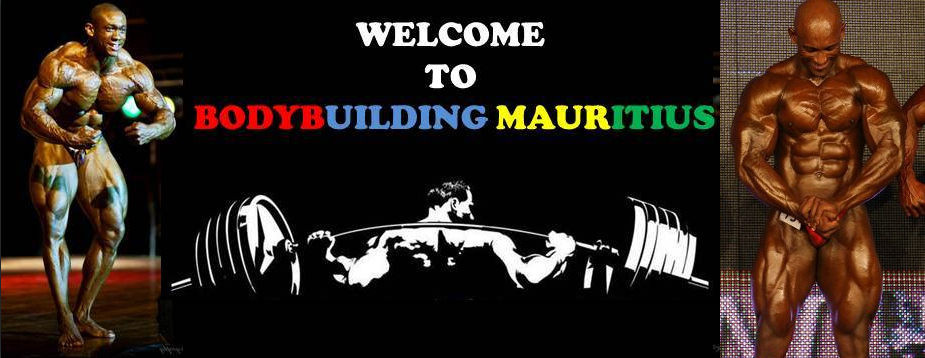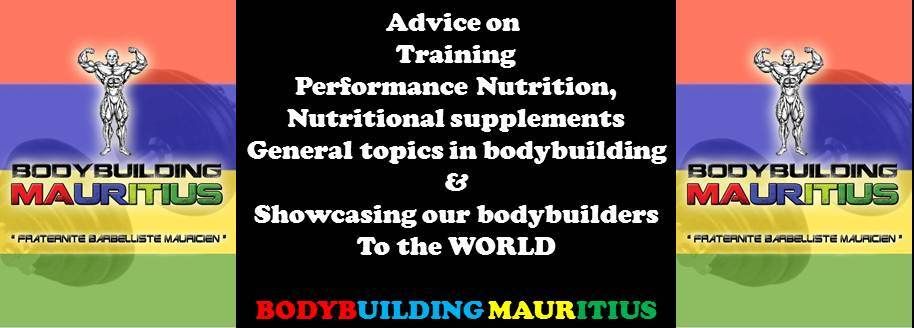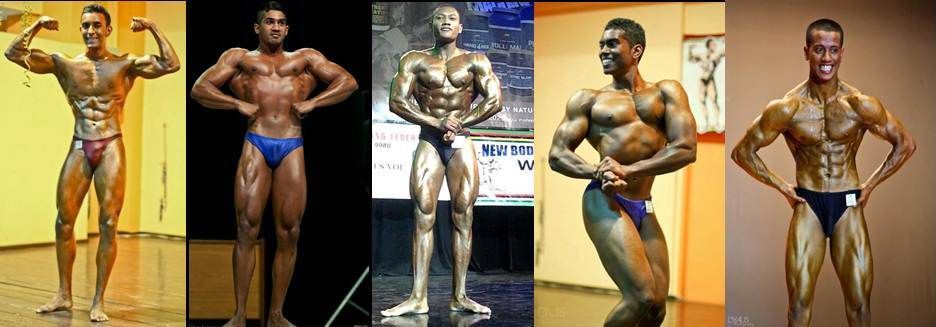Keeping Old School Bodybuilding Alive
How
to Use the Curl
By
Peary Rader (1951)
Who is Peary Rader?
----------------------------------------------------
If you are a reader of the excellent bodybuilding magazine, IRONMAN, then you have Peary Rader to thank for it. Peary Rader founded IRONMAN in 1936. It was then known as SUPER PHYSIQUE. Peary Rader is truly one of the greatest pioneers of bodybuilding and weightlifting and we are pleased to help in keeping his teaching alive by publishing his work on our website. You are all invited to obtain a subscription of IRONMAN magazine, which is the oldest bodybuilding magazine in the world. It's content is excellent and it features several high-calibre writers like Jerry Brainum and Doug Brignole, to name a few. You will not regret it. I made my best progress in bodybuilding using techniques obtained from IRONMAN and its writers. For instance I made my biggest progress 10 years ago using the Positions-of-flexion (POF) system and then recently I am making awesome gains using the 4xMASS AND TORQ system.
 |
| The first issue of Ironman (August 1936), then known as Super Physique. The magazine would be renamed Ironman as from the second issue itself (December 1936) |
 |
| Ironman Magazine is still going strong after a FULL 77 YEARS OF PUBLICATION |
If
one were to ask the average bodybuilder what the most popular or most practiced
exercise was he might answer in the majority of times – the curl.
Probably
the reason this exercise is most used is because to many of the uninformed as
well as to many bodybuilders the biceps muscle is “The Muscle”. Just ask a man
to let you see his muscle and what does he show you? His chest muscles, his leg
muscles, his back muscles? No, almost without exception he will roll up his
sleeve and flex his arm to show his biceps muscle.
The
reason the curl is so popular is because it is the most direct and effective
exercise yet discovered for developing the biceps the quickest and most
massively.
Because
of the specialization on this muscle and the curl exercise, bodybuilders have
evolved quite a large assortment of variations in the curl. Such men as Aronis,
Pederson and Counts have developed their biceps to the peak of perfection and
size by a wide variety of curls almost exclusively. They have worked the biceps
from every angle. Of course you can obtain a very large biceps by doing nothing
but several sets of the regular two arm curl but you will obtain a much larger
development if you will use a great variety of curls. In some positions you
will be able to force a greater and more complete contraction of the biceps. In
others you are able to effect a greater extension.
We
have not carried an illustration of the biceps and will not go into detail of
the anatomy of the muscle because this has been covered many times previously.
If the reader wishes to know the why and wherefor of the exercises we are about
to present we suggest a study of the anatomy of this muscle with special
attention given to its actions. In this manner you will be better able to intelligently
apply the exercise.
You
will hear much argument about the correct form for the curl. The bodybuilder if
he listens to all the pro and con arguments will soon find himself quite
confused. Loosely speaking we would say that there is no absolute correct way
to do a curl. All methods are correct if performed with adequate poundage and
maximum number of repetitions. They all have their own peculiar effect on the
biceps. If you wish a certain effect then you will use a certain variation.
Generally
speaking we might say that your favorite method of curling is the best for you
since you are more likely to work harder on this method and the most important
secret of success is plenty of hard work. so far we have found no other method
for acquiring maximum muscular development and strength.
The
first three illustrations are of common curling variations. In the first photo
we have the regular curl performed on one of the new Dymeck curling bars. Of
course you don’t need one of these bars for effective curling but they are of
great use. They can help relieve the strain that is so common to the straight
bar as the wrists are badly twisted. after trying one of these bars for a while
you may like it too well to go back to the straight bars. Of course you can do
this curl with pulley weights by using the floor pulley and if you have one of
the cambered bars so often used on pulley weight outfits you can invert it and
you will obtain the same effect, relatively, that you would with the Dymeck
bar. We especially enjoy doing the curl with a floor pulley-weight outfit
equipped with a floor pulley as the pull on the bar is so constant and smooth.
This
standard curl is probably the most commonly used variation and the first style
taught to beginners. It is also one of the most effective. Even in this style
you can vary your performance considerably. The very strict style is of great
importance. In this style you stand strictly erect and with arms completely
extended you curl the bar to the shoulders bringing the elbows well up to
finish. Then lower it to the thighs again. These movements should be smooth
without a sudden jerk and not too fast so that you can “Feel” the curl all the
way. There should be no body swing whatever to aid the curl. In other words you
“muscle” it all the way.
Another
effective way to prevent cheating in this type of curl is to stand with your
back to a post or door frame and lean back slightly. This will prevent all body
movement. You will find it necessary to lean back slightly to preserve your
balance, otherwise the weight will carry you forward.
Of
course many other variations of this style will occur to you. However one more
important variation of the regular curl should be discussed. This is the
cheating or swinging curl. In this style you use whatever body swing necessary
to get the weight in motion and curled in to the shoulders. Most men start out
with a weight that requires but little swing and then while increasing the
poundage for each set they also increase the swing until they are almost making
a dead hang curling clean. This style is most effective for developing great
strength due to the heavy poundages used but it is also valuable for a
developer and often will break down those stubborn tissues that have become
accustomed to the regular style. Some instructors are of the opinion that every
exercise should be done in the strictest possible form at all times but we know
from experience that varying the program from strict to loose then back to
strict styles again, etc. has great value. It breaks the monotony and also
provides the muscles with a more varied field of effort which prevents them
from becoming accustomed to one type of movement and thus coming to a
standstill in growth.
The
hand spacing should be varied in this movement. Some of your curls can be done
with the hands touching while others should be performed with a rather wide
grip. Most men can curl a little more with a medium grip than with a narrow
grip.
When
performing this curl or any other of the variations you should also curl the
wrist strongly as you curl the arms so that you also make the exercise a very
valuable forearm developer.
In
the middle photo we have the reverse curl, performed virtually the same as the
regular curl except that the over grip is used instead of the under grip. Here
the similarity ends however for the reverse curl is much different from the
regular curl in that it strongly effects the upper portion of the forearms and
also the biceps in a much different manner. Many men find that they can use
very little weight in this exercise because of the construction of the forearm
and the muscular attachments. It is also said that certain muscles are missing
in many men’s arms which makes it hard for them to perform this movement with
heavy weights.
Perhaps
the best man on this movement is Al Berger of Philadelphia who can perform this
movement correctly with 200 lbs. or over. In fact he is about equal to the best
regular style curling experts. In the regular style many men claim correct
curls with 200 lbs. and we have seen Davis do 205 correctly. At least two men
claim 225 in this lift but it is doubtful if it was performed in strict style.
It is said that Goerner did 220 in correct style. It is possible that he may
have accomplished this for he certainly was one of the strongest men of all
time. It is doubtful if anyone ever did more than this correct or should we say
strict style.
This
movement is also much more enjoyable and just as effective if performed with
the Dymeck bar or a bent or cambered pulleyweight bar with floor pulley. This
relieves most of the extreme twist of the wrists which in some men make it
almost impossible to perform the exercise.
Another
difficulty experienced by some men is that of holding as much weight in the
hands as they can curl due to a weakness of the thumb. Of course this exercise
will strengthen the thumbs but it will also be found that you can use a hook
grip for a more secure hold on the bar. A hook grip is one wherein you lap the
fingers over the thumbs thus securely bringing them into a strong grip. It is
slightly painful at first but this soon passes.
The
range of movement is the same as in the regular curl and you can likewise use
both the strict style as well as the more lenient swinging style. The swinging
style is of more value for weight lifters than for bodybuilders however. You
should use care in adding weight too fast in this exercise due to the
possibility of straining some of the small muscles involved.
In
photo No. 3 we have an exercise that is not too often practiced but a very good
one nevertheless. You can use dumbells only in this movement. You stand with
bells hanging at sides and then curl them to armpits and as high as possible.
This exercise has a very much different effect on the biceps from the other
curls.
Before
going to the next illustrations we would like to mention that the regular and
reverse curl can both be performed with dumbells. Some men prefer dumbells for
the exercise. In this case we often recommend the single dumbell as by working
only one arm at a time you can give deeper concentration to the movement which
is a very important factor if you wish satisfactory results. You can also
perform dumbell curls with loose style as well as strict. In performing the
reverse curl with dumbell you can also hold the dumbell pointing front and back
throughout the movement. This does not give as great a twist to the wrist as the
regular reverse position and yet effects the muscles in virtually the same way.
We
would also like to mention the half movements that are often effective in
jarring stubborn muscles loose and making them grow. These are usually of two
variations. That in which you curl a heavy weight to about the waist and that
in which you start at waist height and curl to the shoulder. In the latter
movement you can if you like start from a low table or the backs of chairs.
Turning
to photos No. 4, 5 and 6 we see some curls performed with the pulley weights.
This apparatus we feel is equally valuable to body builders as the barbell.
There are so many exercises that can be performed to much better effect with
pulley weights than with barbell or dumbells.
Photo
on the left shows the curl to back of neck with overhead pulley. This is one of
the most effective curls as it causes the most complete contraction of the
biceps muscle. In fact you probably will cramp the muscle quite badly if you
are inclined toward cramps. Many instructors feel these cramping movements are
the most effective developing movements and try to use them on all the muscles.
We do not entirely agree on this but do believe they have certain values.
Complete contraction (whether the muscle cramps or not) of a muscle is
important to maximum growth. It is not too important, however, in the
development of maximum strength. In fact a muscle in this position has but
little of its strength in a more normal position. You should be sure of
complete extension of the arm in this exercise for every repetition. Nothing
can be gained by doing this exercise in a loose style since it is basically a
strict movement. Of course it can be done either standing, sitting or kneeling.
This exercise can also be done with two hands at a time on the long bar tho we
prefer the one arm movement because of the ease of concentration with one arm.
In
the middle photo we have the regular one arm curl performed with the floor
pulley, and by the way you can perform more exercises with the floor pulley
than you can with an overhead pulley so no pulley weight set is complete
without some form of floor pulley – be sure it is correctly fastened to the
floor. This exercise is about the same as the one arm curl with dumbell except
that you have a more constant resistance to the completion of the movement with
the pulley than you do with a dumbell. Another variation with floor pulley is
the curl to the back instead of the front of the body.
On
the right we see a variation with the wall pulley in which the exerciser starts
with arm extended towards the wall and then curls it in to the shoulder as
shown. You will like this variation as a change in your routine and it is a
fine developer if you have a wall pulley available. You can vary this movement
alternately by bringing the hand to the back instead of the front.
Now
let’s lift our gaze to the next set of pictures and get ourselves seated in a
chair for some really serious curling. This shows Bud Counts doing a one arm
dumbell curl and you can see how great the contraction of the biceps is in this
position. This is a favorite movement of Bud’s as well as many of the big arm
boys. They spend a lot of time on this movement. Note the position of the free
hand and supporting knee. This is important as it gives a solid support from
which to work. A few sets of this movement will make your biceps ache. This is
essentially a muscle building movement. There are several slight variations of
this exercise but we feel the one shown is the best.
In
the next photo we find another exercise preformed with the wall pulley. However
you can also use a dumbell for this movement although we feel the wall pulley
weight is much to be preferred since it maintains steady resistance over the
complete range of movement. This exercise gives strong action over a complete
range of the muscle from extension to almost complete contraction. You will
find it a superb exercise. Of course you can use a box or a convenient support.
Now
down to the next series of photos. We have Hal Stephens demonstrating two more
exercises with the floor pulley. Both of these can also be performed with
either barbell or dumbells. We especially like the pulley weights for these
because of the steady resistance over the entire range of movement.
The
two photos on the left show the beginning and finish of the curl with elbows
resting on knees for support. This is an excellent exercise and gives almost
complete contraction to the biceps. On the right Hal is shown as he performs
the curl while bent at the waist. This position should be maintained all during
the curl with no up and down movement or “cheating”. In both exercises you
should bring the bar s high as possible so to obtain complete contraction of
the biceps.
Now
in the next series of photos we see our model doing the curl while prone on the
flat bench. In this case he is using one arm and dumbell. Some men prefer to
use the barbell and two arms. If you do this you should use a rather high bench
and position yourself farther forward over the end of the bench. In the photo
on the right the model demonstrates the dumbell curl on the incline bench. This
is a favorite with many bodybuilders and is considered one of the best as it
gives such a complete extension to the biceps whereas most of the other curls
discussed give complete contraction although not quite complete extension.
Starting the curl from a complete hang you will feel the biceps completely
stretched out then curl them to as near the shoulders as possible. In the first
exercise you should not use a poundage that will not permit of strict
performance although in the incline bench curls many bodybuilders work up to
heavy weights with a slight swing with benefit. However some of your curls
should be in strict style.
We
have by no means exhausted the varieties of curling exercise. There are a great
number of other styles used by various bodybuilders but we have selected what
we consider the best to present in this article and any more would result in
confusion. If you are an advanced man you may develop certain variations that
you like better than others. If they prove effective then they are probably
best for you because you will certainly work harder on an exercise you like
more than one you don’t like. Again we repeat, it is hard work intelligently
applied that gives results. Of course we can’t minimize the importance of diet,
sleep and other factors conducive to health.
With
such a list of exercises we know you will be undecided as to how to make up a
biceps building or curling program. The biceps can stand a lot or work and you
are not in as much danger of going stale with biceps work as you would be with
presses or squats. If you are a beginner we would of course suggest that you
break in gradually with the regular curl and work up to about 3 sets of 8 to 12
reps then add another exercise, in this case the reverse curl. By this time you
will have reached an advanced stage where you can use one of the following
programs:
Regular
curl with back against post.
Incline
bench curl with dumbells.
One
arm reverse curl.
Perform
the above exercises 8 to 12 reps adding 2½ pounds for each hand when you reach
12 reps. Start with one set of each exercise than add another set each two
weeks.
When
you reach four sets of each exercise for four weeks then change to another
program such as the following:
Heavy,
swinging curls with barbell.
Seated
one arm curl as shown in photo No. 8.
Curl
to back of neck with overhead pulleyweight. (if you don’t have a pulleyweight
substitute bent over curl in rowing position.)
Use
the same rep and set system as for first program.
Your
next program will be made up of pulleyweight exercises entirely:
One
arm curl, standing, with floor pulley.
Side
curl with wall pulley with elbow raised as in photo No. 6.
Two
arm seated curl as shown in photo No. 10.
Reverse
pulley curl with one or two hands.
Use
same set and rep schedule.
The
next program will be made up of cheating exercises and will aim at developing
additional power and also additional size from a change of style and poundage
and considerable effort:
Two
arm swinging curls.
Two
arm reverse swinging curls.
Swinging
curls with dumbells on incline bench.
In
the above program you should change the rep schedules and do from 6 to 8 reps
and work up to 5 sets of each exercise by one additional set each two weeks.
This
gives you four programs of specialization which should take you approximately 8
months to complete. By this time your biceps should be approaching their
maximum in size and strength. We suggest that you may wish to change these
programs slightly by including some of the other styles and variations we have
given. If you are an advanced bodybuilder you are probably quite justified in
making a beneficial change if you wish. However, if you are quite new to the
game, we suggest you follow them just as we have given them.
Some
confusion may result from our instructions regarding the increasing of the sets
in each program. You should drop back to 1 set of each exercise when starting
each program and progressively work up to the suggested number of sets which is
usually 4 of each exercise. This constant variation of effort is more conducive
to rapid growth than if you maintained one permanent schedule of 4 sets per
exercise after you reached this number.
We
realize too that all men do not gain best on the same number of sets, or above
all, the same number of reps. Quite a few bodybuilders go as high as 15 reps
while a great number never go over 8 reps per set with equally good results. I
personally prefer the latter. Some variation in this should be practiced from
time to time. Try different numbers until you find the one best suited to
yourself. Rest only about 1 minute between sets, but 5 to 10 minutes between
exercises.
It
is also likely that many fellows will not feel up to doing 3 exercises for 4
sets due to low energy. In this case it is wise to cut down somewhat, perhaps
to only 2 exercises. However, nearly everyone will be able to do 3 exercises if
they work up to it properly and gradually. You should never start right in with
a high number of exercises. Not only do you overwork, but you also cheat
yourself of progress and greater growth by jumping several progressive stages
thus loosing the value that you would have accrued had you built up
progressively.
We
must caution you to always make your movements complete, unless you are
purposely practicing the suggested half movements. Especially be sure that you
get complete extension for flexibility of the muscle and complete contraction
for development. Always warm up properly to avoid a strained biceps muscle.
Wear a sweat shirt to keep warm, even though your vanity may suffer. Above all,
don’t become so enamored of biceps development that you forget the even more
important arm muscle, the triceps, which we shall deal with later.


























.jpg)
.jpg)
.jpg)
.jpg)
f.jpg)
.jpg)
.jpg)
.jpg)
.jpg)
.jpg)
.jpg)
.jpg)
.jpg)
.jpg)
.jpg)
.jpg)
.jpg)
.jpg)
.jpg)
.jpg)
.jpg)
.jpg)
.jpg)
.jpg)
.jpg)
.jpg)
.jpg)











